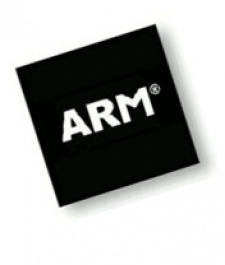When it comes to 3D hardware and mobile phones, the extra cost of the silicon, plus issues such as additional power consumption, means only top-of-the-range devices such as the iPhone or Nokia's N95 or N82 currently boast such a feature as Pocket Gamer's (irregular) round-up of the Top 10 phones in terms of 3D graphics performance demonstrates. Still, these devices make great use of the extra grunt, with their graphically-rich menus, as well as their gaming potential.
Significantly, the vast majority of these devices use the PowerVR MBX designs from UK graphics outfit Imagination Technologies.
Others companies are planning to get in on the act too, however. We had our first look at Nvidia's APX 2500 architecture earlier this year, while AMD has its own strategy. But perhaps the most important company in the space is ARM.
Best known for its CPU designs it claims ten billion chips shipped it's now ramping up interest in its Mali family multi-core graphics chips.
"The current market for GPUs (graphic processing units) is high-end devices so tens of millions of devices, but this is changing and in the 2011/2012 timeframe, we expect it to be a billion unit market," says Chris Porthouse, one of ARM's senior product managers.
"There's a blurring between what a mobile device is and what a consumer device is and so there's a lot of competition between OEMs. This is also being driven by products such as iPhone. People now expect an immersive experience from any consumer device, which means the major mobile OEMs are putting hardware acceleration at the heart of their multimedia strategies."
At its lowest level, the Mali-55 design which Porthouse says is already shipping in phones only adds one square mm of silicon when integrated to a CPU, while offering features such as 4x full-screen anti-aliasing to provide smooth screen graphics.
The Mali-200 (due in early 2009) has more muscle. It's OpenGL ES 2.0-compliant, allowing developers to make use of features such as programmable shaders and Flash 10. It's designed to be used in high-end feature phones such as the Ericsson U500 platform.
But according to Porthouse, it's the Mali-400 (due in devices in 2010) that ARM expects to really shake up the market for mobile 3D graphics.
Like Nvidia's APX 2500, it's designed to output 1080p TVout via HDMI onto your widescreen TV. It might even end up in cable TV boxes apparently, but it's the benefit for mobile gaming that we really care about.
A configurable architecture, it consists of a vertex processor capable of 30 million triangles per second plus four individual fragment (or shader) processors which, when they are all being used, can theoretically handle over one billion pixels/second.
Indeed, one of the neatest features of the Mali-400 architecture is OEMs can choose how many fragment processors they want to use more processors obviously requires more silicon and higher power consumption with ARM's driver software abstracting the details from developers, who can write software for what's effectively a single platform. Porthouse claims the graphical performance of Mali-400 scales almost linearly, depending on how many cores are included.
And developers are already getting excited too, it seems, with the likelihood of ARM's GPUs appearing in devices from Nokia, Sony Ericsson and Samsung being raised in a recent PocketGamer.biz interview with LemonQuest CEO Ignacio Cavero.
"The big deal is that this kind of processor will enable more OpenGL-based development, using the skills of existing PC game developers," Cavero pointed out. "It's easier to program, and very similar to the graphics engine used for PC games. So in some ways, it's going to unify the programming for mobile handsets."
More power and less fragmentation? Now that's something everyone can look forward to.
ARM says a billion phones will have 3D hardware by 2012
It's getting in on the act with its Mali family of silicon





















